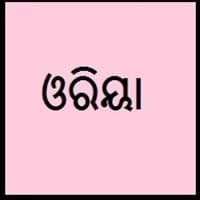Oriya and Cebuano
Countries
India
Philippines
National Language
India
Philippines
Second Language
Not spoken in any of the countries
Philippines
Speaking Continents
Asia
Asia
Minority Language
Not spoken in any of the countries
Not spoken in any of the countries
Regulated By
Not Available
Visayan Academy of Arts and Letters
Interesting Facts
- The earliest literature in Oriya was traced in 7th to 9th centuries.
- Since Odia is having a long literary history and has not borrowed largely from other languages, it is the 6th classical language in India.
- About one-fifth of the population of the philippines speak cebuano and are second largest ethnolinguistic group in the country.
- Cebuano contains many words of Spanish origin.
Similar To
Bengali and Assamese
Hiligaynon Language
Derived From
Sanskrit Language
Island of Cebu
Alphabets in
Oriya-Alphabets.jpg#200
Cebuano-Alphabets.jpg#200
Scripts
Bengali, Odia alphabet (Brahmic)
Latin
Writing Direction
Left-To-Right, Horizontal
Not Available
Hello
ନମସ୍କାର (namascara)
Hoy
Thank You
ଧନ୍ୟବାଦ୍ (dhanyabaad)
Salamat
How Are You?
କେମିତି ଅତ୍ଚନ୍ଥି? (kemiti achanti?)
Kumusta man ka?
Good Night
ସୁଭରାତ୍ର (shubharaatra)
Maayong Gabii
Good Evening
ସୁଭସନ୍ଧ୍ୟା (subha sandhya)
Maayong Gabii
Good Afternoon
ସୁଭ ଖରା ବେଳ (shubha kharaa bela)
Maayong Hapon
Good Morning
ସୁପ୍ରଭାତ (suprabhaata)
Maayong Buntag
Please
Not Available
Palihug
Sorry
ମୁଁ ଦୁଃଖିତ (mū duḥkhita)
Ikasubo ko
Bye
ସୁବିଦାୟ (shubidaaya)
Babay
I Love You
ମୁଁ ତୁମକୁ ଭଲ ପାଏ (mu tumoku bhala paye)
Gihigugma ko ikaw
Excuse Me
କ୍ଷମା କରିବେ (kyamā karibe)
Ekskyus mi
Dialect 1
Baleswari
Boholano
Where They Speak
India
Bohol
Dialect 2
Ganjami
Southern Kana
Where They Speak
India
southern Leyte
Dialect 3
Kosli
North Kana
Where They Speak
India
northern part of Leyte
How Many People Speak
Not Available
How Many People Speak?
Not Available
Second Language Speakers
Not Available
Native Name
ଓଡ଼ିଆ (ōṛiyā)
Visayan
Alternative Names
Odisha, Odri, Odrum, Oliya, Uriya, Utkali, Vadiya, Yudhia
Binisaya, Bisayan, Sebuano, Sugbuanon, Sugbuhanon, Visayan
French Name
oriya
cebuano
German Name
Oriya-Sprache
Cebuano
Pronunciation
[ˈoɽia]
Not Available
Ethnicity
Odias
Cebuano people
Language Family
Indo-European Family
Austronesian Family
Subgroup
Indo-Iranian
Not Available
Branch
Indic
Not Available
Early Forms
No early forms
No early forms
Standard Forms
Standard Odia
Standard Cebuano
Signed Forms
Indian Signing System
Not Available
Scope
Individual, Macrolanguage
Individual
ISO 639 1
or
No data Available
ISO 639 6
Not Available
Not Available
Glottocode
macr1269
cebu1242
Linguasphere
No data available
No data Available
Language Type
Living
Living
Language Linguistic Typology
Subject-Object-Verb
Verb-Subject-Object
Language Morphological Typology
Not Available
Not Available
All Oriya and Cebuano Dialects
Most languages have dialects where each dialect differ from other dialect with respect to grammar and vocabulary. Here you will get to know all Oriya and Cebuano dialects. Various dialects of Oriya and Cebuano language differ in their pronunciations and words. Dialects of Oriya are spoken in different Oriya Speaking Countries whereas Cebuano Dialects are spoken in different Cebuano speaking countries. Also the number of people speaking Oriya vs Cebuano Dialects varies from few thousands to many millions. Some of the Oriya dialects include: Baleswari, Ganjami. Cebuano dialects include: Boholano , Southern Kana. Also learn about dialects in South American Languages and North American Languages.
Oriya and Cebuano Speaking population
Oriya and Cebuano speaking population is one of the factors based on which Oriya and Cebuano languages can be compared. The total count of Oriya and Cebuano Speaking population in percentage is also given. The percentage of people speaking Oriya language is 0.50 % whereas the percentage of people speaking Cebuano language is 0.32 %. When we compare the speaking population of any two languages we get to know which of two languages is more popular. Find more details about how many people speak Oriya and Cebuano on Oriya vs Cebuano where you will get native speakers, speaking population in percentage and native names.
Oriya and Cebuano Language Codes
Oriya and Cebuano language codes are used in those applications where using language names are tedious. Oriya and Cebuano Language Codes include all the international language codes, glottocodes and linguasphere.





